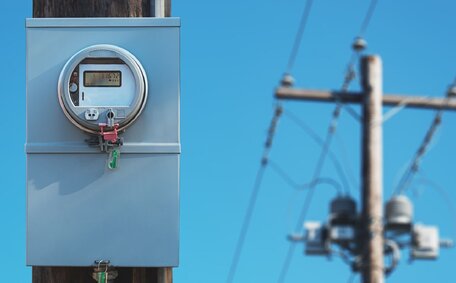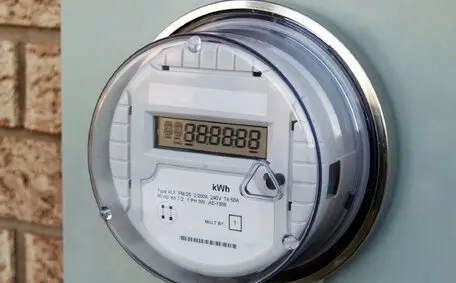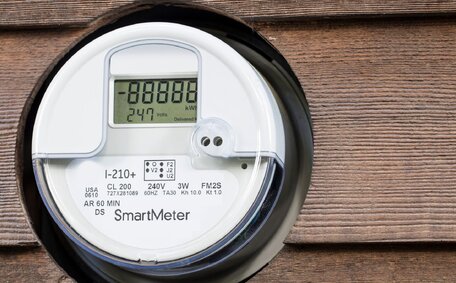Australia is on a path towards a more energy-savvy future, making precise electricity measurement more crucial than ever. Recently, the Albanese Government’s plan, featuring a $50 million boost in smart meters, underscores this transformation.
Backed by the Clean Energy Finance Corporation, the rollout aims to empower Australian households to better manage their energy use, reducing bills and enhancing convenience. With smart meters expected to contribute significantly to the National Electricity Market’s energy storage by 2050, the need for precise energy tracking is undeniable.
This blog will dive into the different types of electrical meters in Australia. Grasping these options helps ensure accurate billing, effective energy management, and adherence to Australian regulations. Picking the right meter affects how you monitor your usage, playing a big role in energy costs and efficiency.
Traditional Electromechanical Meters
Electromechanical meters, often called analog or mechanical meters, have long been used to measure electricity usage. Even as digital smart meters gain ground, these meters are still seen in older properties. Their straightforwardness and dependability made them a worldwide utility favourite, including here in Australia.
Functionality
Electromechanical meters operate using a spinning disc mechanism known as a Ferraris wheel. The disc rotates in response to the amount of electrical energy flowing through the meter.
The speed of rotation is proportional to the power consumption, which is then recorded by a series of dials that display the total energy used in kilowatt-hours (kWh).
As electricity flows through the meter, it generates a magnetic field that causes the aluminium disc to spin. The more electricity used, the faster the disc rotates and the higher the reading on the dials.
Advantages and Limitations
One of the key advantages of electromechanical meters is their long lifespan, often lasting several decades with minimal maintenance. They are also valued for their straightforward design, which makes them relatively easy to understand and operate.
However, these meters have significant limitations in the modern era. They lack the ability to provide accurate, real-time data tracking, and they cannot support advanced features required for modern energy management, such as time-of-use billing or remote monitoring.
As a result, they are increasingly being phased out in favour of more advanced digital meters that offer greater precision and functionality.
Electronic Meters
Electronic meters, also known as digital or smart meters, represent a significant upgrade from traditional electromechanical meters. With their digital display and improved accuracy, these meters offer a more modern and efficient way to measure electricity usage.
They provide precise readings and have become increasingly common in households, particularly in regions like Australia, where energy management is a growing concern.
How They Work
Electronic meters use solid-state components to measure electricity usage digitally. Instead of the spinning disc seen in electromechanical meters, electronic ones use microprocessors and sensors for energy calculation.
These meters continuously monitor the flow of electricity and convert this data into digital signals, which are then displayed on the meter’s screen. This allows for real-time monitoring of energy usage, as well as the ability to store data for future analysis.
Additionally, electronic meters can measure electricity usage across multiple phases and tariffs, enabling more complex billing structures that can reflect time-of-use pricing.
Benefits Over Traditional Meters
The benefits of electronic meters are numerous. They offer significantly better accuracy compared to electromechanical meters, eliminating the small errors that can accumulate over time with older technology.
Their digitaldisplays make them easier to read, and they often come equipped with features that allow for remote monitoring and automatic reporting of energy usage. This enables utilities and consumers to track energy consumption more closely, leading to more efficient energy use and cost savings.
In addition, electronic meters support multiple tariffs and can be programmed to accommodate different billing periods, making them a versatile tool in modern energy management. Due to these advantages, the adoption of electronic meters has steadily increased in Australian households, helping to modernise the country’s energy infrastructure.
Smart Meters
What Are Smart Meters?
![2024 08 Different Type Of Smart Meter Type Smart Meter]()
Smart meters are advanced electronic devices that measure electricity consumption with high precision and offer real-time data reporting. They are increasingly popular in Australia due to their ability to provide detailed and timely information about energy usage to both consumers and utility providers.
Unlike traditional meters, smart meters can transmit data remotely, eliminating the need for manual readings and providing users with up-to-date information that can be accessed online or via mobile apps.
Features and Functionality
One of the defining features of smart meters is their ability to facilitate two-way communication between the meter and the utility provider. This communication allows for real-time monitoring of energy usage and enables utilities to detect outages, manage load distribution, and perform remote meter readings without needing to send personnel on-site.
Smart meters also support dynamic pricing models, such as time-of-use tariffs, by tracking when energy is used during the day. This can lead to more accurate billing based on actual consumption patterns, encouraging consumers to shift their usage to off-peak times when electricity is cheaper.
Advantages of Smart Meters
Smart meters offer several advantages over traditional and electronic meters. They empower consumers to better manage their energy consumption by providing detailed insights into usage patterns.
![2024 08 Types Of Smart Meters Types Smart Meters]()
This can lead to potential cost savings, as consumers can adjust their behaviour to take advantage of lower tariffs during off-peak hours. The real-time data provided by smart meters also helps utility providers optimise the grid, reducing the likelihood of outages and improving overall energy efficiency.
Additionally, automated data collection and remote monitoring capabilities reduce the need for manual meter readings, lowering utilities’ operational costs.
Government Initiatives
In Australia, the government has actively promoted the installation of smart meters as part of its broader strategy to enhance energy efficiency and modernise the national grid.
Several initiatives and regulations have been introduced to encourage the adoption of smart meters, particularly in states like Victoria, where a comprehensive rollout has already occurred. These initiatives aim to provide consumers with the tools they need to make informed decisions about their energy use, ultimately contributing to a more sustainable and efficient energy future for the country.
Prepaid Meters
Prepaid meters are a type of electricity meter that allows consumers to pay for their electricity usage in advance. This system is akin to a prepaid mobile phone plan, where users purchase credit that is then consumed as electricity is used.
Prepaid meters are designed to give consumers greater control over their energy spending and to help avoid the surprise of large, unexpected bills.
How Prepaid Meters Work
Prepaid meters operate by deducting credit from a user’s account as electricity is consumed. Users can top up their meters using various payment methods, such as online banking, mobile apps, or physical vouchers purchased from convenience stores.
The meter displays the remaining credit, and when this balance nears depletion, the consumer is alerted to add more credit to avoid disconnection. If the meter runs out of credit, the electricity supply will be temporarily cut off until the account is topped up. Some meters may also offer emergency credit to prevent immediate disconnection.
Benefits for Consumers
Prepaid meters’ primary benefit is that they help consumers manage their budgets more effectively. By paying for electricity in advance, consumers can avoid the shock of an unexpectedly high bill.
This system also encourages energy conservation, as users are more likely to monitor and reduce their consumption when they see how much credit is being used in real-time. Additionally, prepaid meters eliminate the risk of accumulating debt with energy providers, making them a useful tool for those who prefer or need to control their expenses closely.
Suitability in Australia
Prepaid meters are a great fit for rental properties or setups needing close energy monitoring, like shared accommodations or temporary housing. In Australia, they’re a handy choice for tenants looking to avoid the hassle of transferring energy accounts or landlords aiming to simplify billing.
Although not as common as smart meters, prepaid meters provide a valuable solution where budget control and energy management are crucial.
Choosing the Right Meter for Your Needs
![2024 08 Different Type Of Smart Meter Type Smart Meter]()
Factors to Consider
When choosing the right electrical meter, consider the type of property you have and your energy usage habits. For residential properties, especially those with stable energy consumption, a basic electronic meter might suffice.
However, if you’re interested in real-time monitoring and optimising your energy use, a smart meter offers advanced features like remote access and detailed tracking. For commercial properties or households on time-of-use tariffs, interval meters provide granular data that can help you manage costs by shifting energy use to off-peak times.
If you prefer paying in advance or need strict budget control, especially in rental properties, a prepaid meter could be the best option.
Cost vs. Benefits
The upfront cost of installing different meters can vary, with smart and interval meters generally being more expensive than basic electronic meters.
However, the long-term benefits—such as energy savings, more accurate billing, and better consumption management—often outweigh the initial investment, making advanced meters a smart choice for those who prioritise efficiency and cost control.
Bright Force Electrical: Your Partner in Meter Installation and Upgrades
At Bright Force Electrical, we specialise in the installation and upgrading of all types of electrical meters, from basic electronic meters to advanced smart and interval meters. Our team of highly trained Level 2 electricians is equipped to handle even the most complex meter installations and upgrades with precision and efficiency.
Whether you’re upgrading your home’s energy system or managing a commercial property, we have the expertise to ensure your meter installation meets the highest standards.
When you choose Bright Force Electrical, you’re choosing a commitment to high-quality service, strict adherence to Australian standards, and quick response times. Our experienced electricians ensure that every installation is done safely and accurately, minimising downtime and disruption.
We take pride in our attention to detail and customer satisfaction, making sure that your new meter is set up correctly for optimal performance. With us, you can trust that your electrical needs are in capable hands.
Ready to upgrade your electrical meter? Call Bright Force Electrical today for a consultation or to schedule your installation. Our Level 2 services guarantee a smooth and hassle-free process from start to finish. Let us help you take control of your energy management with an expert installation that you can rely on.
End your search for the perfect electrical meter with Bright Force Electrical—your trusted partner in power management.










